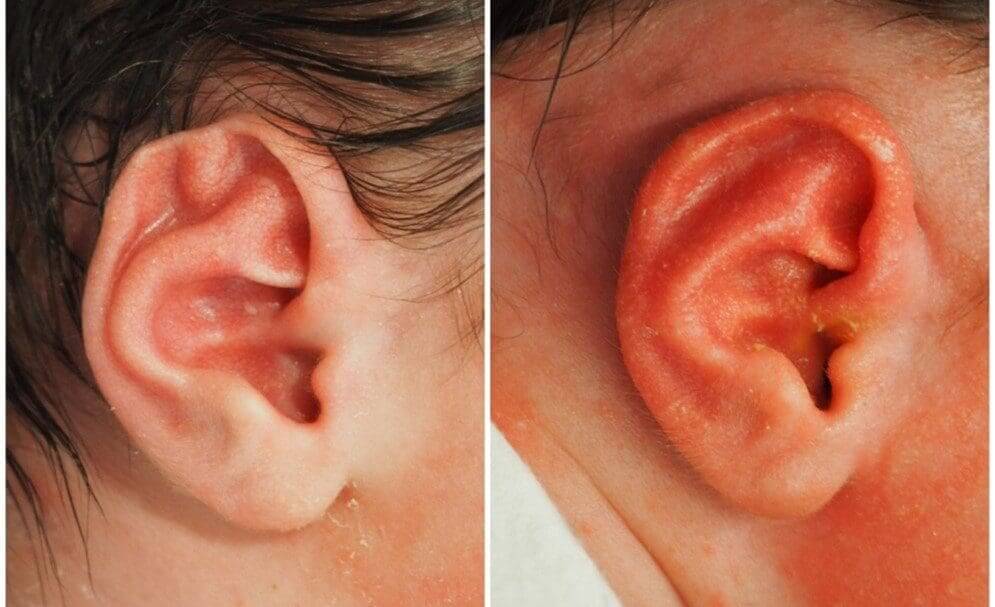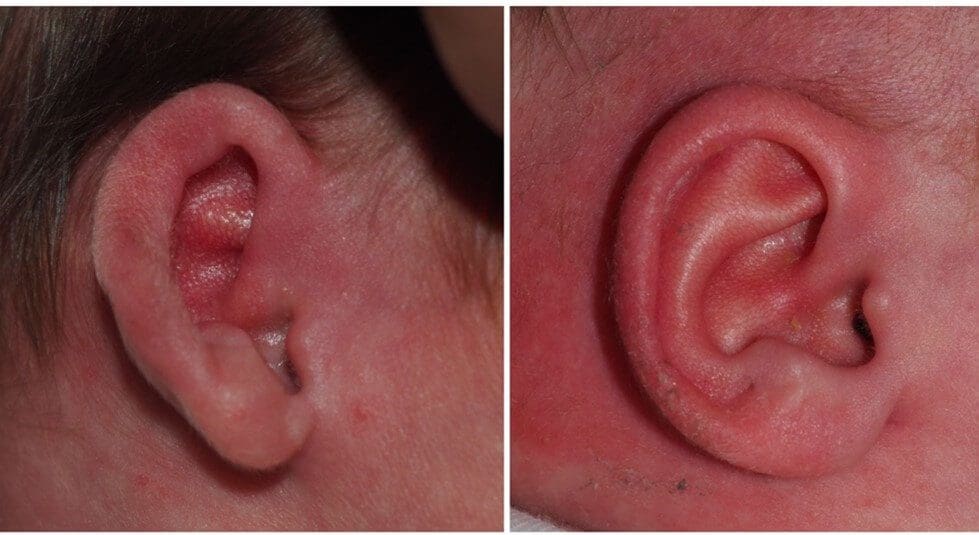
Baby ear deformities
This chapter was composed by Dr Asaf Olshinka, a Pediatric Plastic Surgeon specialist.
This chapter summarize the diagnosis and treatment of baby ear deformities.
What are baby ear deformities and how common is it?
When infants are born with an irregular ear shape, they are said to have a baby ear deformity. The ears can be folded, stick out or are otherwise irregularly shaped. Common deformations include helical rim anomalies, prominent ear, lidding/lop ear, Stahl ear and cupped/constricted ear and more.
Congenital ear deformations are common; we can find in different researches that up to 30% of newborns will have some degree of auricle anomaly, some of it will resolve spontaneously and takes on a more normal form as the child grows. Because it’s unknown which ear deformities will correct on their own and which will not, it’s important to discuss treatment options as early as possible.

What are the implications of baby ear deformities?
Mostly, the main issue in baby ear deformity is the aesthetic one and there is no functional (hearing) problem. However, one must remember that ear deformities can be a source of embarrassment, distress and teasing for young children.
Why early treatment is important?
In the first 2 weeks of life, the baby’s ear is soft, malleable and its shape can be changed; this can be explained by the malleability of the infant cartilage, due to the initial high estrogen and hyaluronic acid levels just after birth.
Therefore, the ideal timing for conservative treatment is in the first week of life and up to 2 weeks. Cases should be referred as soon as possible in order to preserve the possibility of a non-surgical treatment approach and achieve desired results in shorter treatment periods. The best results for ear molding treatment in babies with ear deformities occurs when treatment is initiated as soon as possible, and preferably within the first 2 weeks of life, and finished till the age of 2 months when the window of opportunity closes. Success rates decrease and length of treatment increases when initiation of treatment is delayed.
What is non-surgical treatment for baby ear deformities?
Baby ear deformities can be simple or complex. Sometimes simple conservative measures are sufficient, such as the use of surgical tapes, foams, and wires; but in some more complex cases, a different, case specific techniques for nonsurgical treatment are needed to achieve excellent results in treating the deformations.
You can find some examples of early detected baby ear deformities and post nonsurgical treatment results.
Remember, auricular congenital deformations are common and it is crucial to diagnose them early, preferably in the first few days of life. When diagnosed early, the majority of ear deformations can be treated conservatively and you can avoid unnecessary surgeries and distress for you and for your child.
For comments and questions, please register
